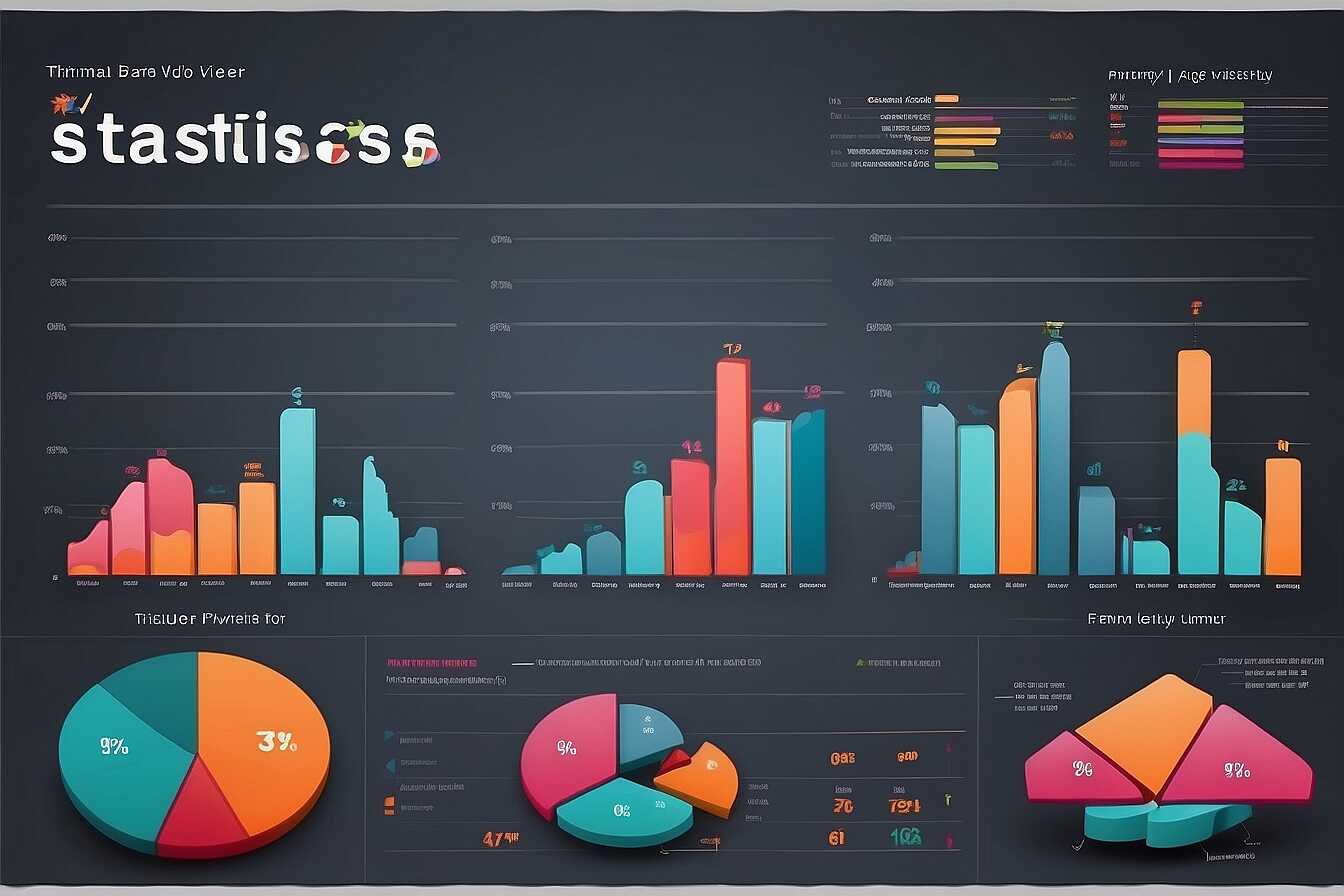Mobile site speed matters significantly for user experience and SEO, influencing how visitors interact with your site. A fast-loading site enhances user satisfaction, reduces bounce rates, and increases engagement, which are crucial for retaining customers and driving conversions. At Metrics Rule, we understand the importance of mobile site speed as it directly affects your SEO rankings and overall digital presence. By optimizing your mobile site, you can improve user experience and ultimately boost your search engine visibility.
Understanding Mobile Site Speed and its Importance
Mobile site speed refers to how quickly a web page loads on mobile devices. It plays a crucial role in website success because it directly influences user experience and SEO rankings. Faster load times provide a seamless browsing experience, reducing bounce rates. Research shows that a delay of just one second can lead to a 7% reduction in conversions. Additionally, Google factors mobile site speed into its ranking algorithm, making it essential for improving visibility in search results. For e-commerce businesses, enhancing mobile site speed can significantly drive both traffic and sales.
Key Factors Affecting Mobile Site Speed
Multiple factors contribute to mobile site speed, including image optimization, server response time, and the use of caching. Images should be compressed to minimize load times without sacrificing quality. A reliable hosting provider can ensure optimal server response times, which is crucial for efficient crawling and indexing by search engines. Implementing caching techniques can enhance performance by storing frequently accessed files. By focusing on these essential elements, website owners can improve their site’s speed, thus enhancing user experience and increasing SEO rankings. Metrics Rule, located in Vancouver, offers specialized services aimed at optimizing mobile site speed for better performance.
Impact of Mobile Speed on User Engagement and Retention
Mobile site speed significantly affects user engagement metrics such as bounce rate and session duration. Faster load times lead to reduced bounce rates, which indicates users are more likely to stay and explore the site. For instance, research shows that a one-second delay in loading can increase bounce rates by up to 32%. Keeping your site’s mobile speed optimal can improve overall user satisfaction, especially for e-commerce websites, leading to higher retention rates.
Factors Affecting Mobile Site Speed and User Satisfaction
Critical factors affecting mobile site speed include image optimization, server response times, and code efficiency. For e-commerce websites, compressing images and minimizing JavaScript can dramatically enhance performance. Implementing a Content Delivery Network (CDN) can also improve load times by serving content closer to users. This not only ensures a smoother shopping experience but also boosts search engine rankings. In Vancouver, where competition is fierce, focusing on these technical aspects will help improve user engagement and retention.

Mobile Site Speed as a Key SEO Ranking Factor
Mobile site speed is an essential aspect that Google and other search engines utilize in their ranking algorithms. Faster websites enhance user experience, reducing bounce rates and increasing session durations, which signals to search engines that the site provides valuable content. Key metrics that impact mobile site speed include page load time, Time to First Byte (TTFB), and the overall responsiveness of a webpage. Properly optimizing these elements can significantly elevate search visibility and traffic, aiding e-commerce sites in capturing potential customers effectively. Research indicates that optimizing mobile site speed can improve a website’s performance by as much as 50%, leading to higher SEO rankings and increased user satisfaction.
Understanding Mobile Load Time and SEO Performance
Mobile load time is crucial for ensuring a website’s SEO performance. Google has explicitly stated that mobile speed is a ranking factor, making it necessary for website owners to focus on this aspect. Achieving a balance between design and performance can enhance the user experience, allowing pages to load in under three seconds. Optimizing images, leveraging browser caching, and minimizing JavaScript are some proven strategies for improving load times. By analyzing your mobile site’s speed through tools like Google PageSpeed Insights, you can gather essential data to identify bottlenecks and test performance. Thus, addressing these areas directly impacts your rankings and is vital for retaining customers in a competitive online landscape.
Key Statistics on Mobile Load Efficiency
- 53% of mobile users abandon sites that take over 3 seconds to load.
- Websites with faster load times lead to higher user retention rates.
- Google reports that a 0.1-second delay in mobile load time decreases conversions by 7%.
- Page speed is a ranking factor in over 90% of mobile searches.
- Optimizing your site for speed can improve mobile rankings by as much as 30%.
- Fast-loading pages can increase the average session duration by 50% or more.
- 86% of mobile users expect instant loading and quality experiences.

Technical Aspects Contributing to Mobile Site Speed
Understanding mobile site speed involves various technical factors. Key elements include server response time, resource compression, and script optimization. A slower server response time can hinder user experience by delaying page loads. Techniques for improving server response time include optimizing databases, utilizing fast hosting, and implementing content delivery networks (CDNs). Resource compression techniques, like Gzip, effectively reduce file sizes for CSS, JavaScript, and HTML, which enhances mobile site performance. Additionally, implementing script optimization strategies, such as asynchronous loading, ensures scripts load in a way that does not block page rendering, significantly improving page speed.
How to Optimize Server Response Time for Mobile Sites
To improve server response time for your mobile site, consider exploring various hosting options, such as managed hosting and cloud services. These solutions provide enhanced reliability and speed. Using tools like Google PageSpeed Insights will help you identify factors that impact performance, including database queries and server configurations. Testing different resource allocation methods can also show you which setups improve loading times effectively. Aim for a server response time of under 200 milliseconds to ensure a responsive experience for your users. This enhancement will not only improve your site’s speed but also its ranking on search engines like Google, making it a win-win for both SEO and user experience.

Effective Strategies for Optimizing Mobile Site Speed
There are several effective techniques for optimizing mobile site speed. First, leverage image optimization techniques by compressing images without loss of quality. Use formats such as WebP for faster loading. Second, utilizing content delivery networks (CDNs) can significantly enhance site speed by delivering content from servers closest to the user. Third, focus on reducing server response time by optimizing your hosting plan or modifying server configurations. A combination of these strategies can lead to more reliable performance and better user experience.
Understanding Image Optimization Techniques for Mobile
Image optimization techniques are essential for improving mobile site speeds. Use tools like TinyPNG or ImageOptim to compress your images efficiently. Additionally, serving images in modern formats like WebP can enhance the loading experience on mobile devices. You should also implement responsive images using the srcset attribute. This approach ensures that the best image size is loaded based on the user’s device resolution and screen size. By utilizing these image optimization strategies, you will deliver a faster and more satisfying browsing experience for your users.
Advantages of Quick Mobile Access
- Improved load times enhance user satisfaction and decrease bounce rates.
- Faster sites see higher levels of user engagement and interaction.
- Better speed rankings boost visibility on Google and increase traffic.
- Quick-loading pages encourage repeat visits and foster loyalty.
- Enhanced mobile optimization increases conversion rates for e-commerce.
- Improved speed helps reduce customer frustration during peak times.
- Fast sites often generate positive reviews and recommendations in social media.

How to Measure and Analyze Mobile Site Speed
Measuring mobile site speed is crucial for optimizing user experience and enhancing SEO. The best tools to utilize are Google PageSpeed Insights, Lighthouse, and GTmetrix. Google PageSpeed Insights evaluates the performance, reliability, and efficiency of your site on mobile devices. Lighthouse offers a more thorough review, providing insights into performance metrics, best practices, accessibility, and SEO. When used together, these tools deliver a comprehensive assessment of your mobile site speed. Google recommends that your mobile site should load within three seconds to ensure visitor retention and improve search rankings.
Understanding Key Performance Metrics for Mobile Testing
Understanding key performance metrics is essential in evaluating your mobile site’s speed and overall performance. Metrics such as First Contentful Paint (FCP), Time to Interactive (TTI), and Speed Index provide insights into how quickly users can access content. First Contentful Paint measures when the first piece of content is rendered on the screen, allowing you to evaluate loading speed. Time to Interactive indicates how long it takes for the page to be fully interactive. These metrics help identify areas for improvement. Regularly testing these metrics ensures your site maintains high performance, ultimately enhancing user satisfaction and SEO rankings.
Responsive Design’s Role in Enhancing Mobile Speed
Responsive design plays a crucial role in enhancing mobile site speed and overall performance. By creating flexible layouts that adapt to different screen sizes, responsive design ensures that users have a seamless experience across devices. Optimizing elements like image sizes and content layout reduces loading times. For instance, images can be scaled to different resolutions depending on the device, helping maintain high-quality visuals without sacrificing speed. This adaptability is essential for improving user satisfaction and SEO rankings, as search engines prioritize sites that offer fast, reliable mobile experiences.
Optimizing Elements for Faster Load Times
To achieve optimal mobile page speed, focus on several key elements in responsive design. Start by compressing images to reduce their file size without compromising quality; tools like TinyPNG and ImageOptim are excellent for this purpose. Additionally, consider using CSS media queries to apply different styles for various devices, which enhances the user experience. A well-structured viewport meta tag is also essential as it helps control layout scaling. Implementing lazy loading for images can further boost performance by delaying image loading until they are in the user’s viewport. Following these steps can lead to a significant improvement in responsive design’s effectiveness at delivering a fast and user-friendly mobile site.
Brands and User Groups Focused on Site Responsiveness
- E-commerce platforms target mobile users for shopping convenience but face challenges with load times.
- Social media apps prioritize speed for seamless interactions and immediate feedback.
- News outlets focus on quick updates to retain readers and drive engagement.
- Online education platforms cater to students needing instant access to course materials.
- Travel websites emphasize speed for booking reservations quickly on-the-go.
- Local businesses rely on fast mobile sites to attract nearby customers in real-time.
- Health services use mobile platforms for immediate appointment scheduling and info access.
Case Studies Showcasing Mobile Speed Improvements
Several businesses have seen remarkable success by investing in mobile speed improvements. A notable example is an e-commerce company that optimized its mobile site speed using techniques like image compression and minimizing HTTP requests. As a result, they experienced a 30% boost in user engagement and a 25% increase in SEO rankings within just three months. Another case study involved a news outlet that redesigned its mobile platform to enhance load times, leading to higher page views and lower bounce rates, which significantly improved their search visibility. Additionally, a local retail business reported that optimizing its mobile speed by reducing server response time helped to increase conversion rates by 20% over six months.
Effective Techniques for Mobile Speed Optimization
To achieve effective mobile speed optimization, businesses can implement various proven techniques. These include utilizing lazy loading for images and videos, optimizing CSS and JavaScript files, and leveraging browser caching. Techniques such as responsive design ensure that the website adjusts seamlessly to different devices. Additionally, cloud-based content delivery networks (CDNs) enhance the speed by distributing content across multiple servers globally. These methods not only improve load times but also ensure a more efficient user experience, thus enhancing user engagement and boosting SEO rankings significantly. Incorporating these strategies can provide measurable results in both performance and visibility, making them essential for digital success.
